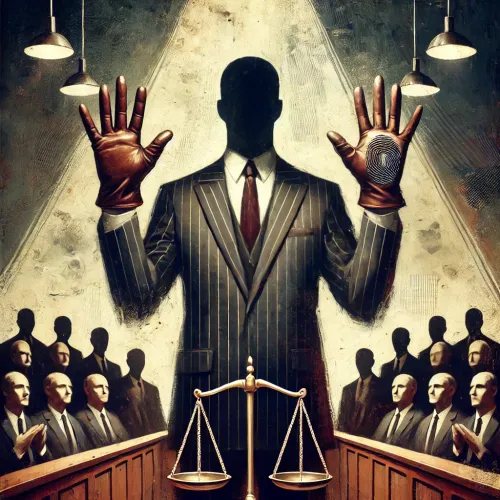On January 13, 1884, during a voyage to Tahiti, Maurice Fitzgerald, the second mate of the American ship Hesper, went missing and was presumed murdered, with his body believed to have been thrown overboard. Suspicion fell upon crew members St. Clair, Hansen, and Sparf. Upon arrival in Tahiti, the ship's captain detained the suspects, who were later transported to San Francisco for trial. St. Clair confessed to the murder in the presence of Hansen and Sparf, implicating them as accomplices. All three were charged with murder.
Legal Issues
The case presented two pivotal legal questions:
- Admissibility of Confessions: Whether a confession made by one defendant in the presence of co-defendants could be admitted as evidence against all parties.
- Jury's Role in Legal Interpretation: Whether juries possess the right to interpret and decide questions of law, independent of judicial instruction, particularly concerning the practice of jury nullification.
Supreme Court Decision
The Supreme Court, in a 5-4 decision delivered by Justice John Marshall Harlan, addressed these issues as follows:
- Admissibility of Confessions: The Court held that if one of two persons accused of a joint crime makes a voluntary confession in the presence of the other, under circumstances where the co-defendant would naturally have contradicted it if untrue, the confession is admissible against both. However, statements made by one accomplice after the crime, in the absence of the other, are admissible only against the declarant.
- Jury's Role in Legal Interpretation: The Court concluded that while juries have the power to deliver general verdicts, they do not have the right to determine questions of law contrary to the court's instructions. Justice Harlan stated that it is the duty of juries to accept the law as given by the court and apply it to the facts. This decision effectively limited the practice of jury nullification by asserting that judges are not required to inform juries of any inherent power to judge the law.
Implications
The ruling in Sparf & Hansen had significant implications for the American legal system:
- Limitation on Jury Nullification: By affirming that juries should follow judicial instructions on legal matters, the Court curtailed the practice of jury nullification, where juries acquit defendants based on their interpretation of the law's justice. This delineation reinforced the separation of responsibilities between judges and juries.
- Judicial Authority: The decision underscored judicial authority in interpreting the law, positioning judges as the primary legal arbiters and confining juries to fact-finding roles.
- Legal Consistency: By directing juries to adhere to judicial instructions, the Court aimed to promote consistency and predictability in legal proceedings, reducing the variability that could arise from juries independently interpreting the law.
Dissenting Opinions
The dissenting justices expressed concerns about the majority's decision:
- Justice Gray, joined by Justice Shiras, argued that juries have the legal power to decide both law and fact in criminal cases, emphasizing the historical role of juries as a check on potential judicial overreach.
- Justice Brewer, joined by Justice Brown, contended that the jury's right to interpret the law is fundamental to the justice system, cautioning against undermining this traditional safeguard of individual liberties.
Subsequent Developments
The Sparf & Hansen decision has been referenced in numerous cases concerning the roles of judges and juries:
- United States v. Dougherty (1972): The D.C. Circuit Court acknowledged the jury's power to nullify but held that judges are not required to inform juries of this power, aligning with the precedent set by Sparf & Hansen.
- United States v. Thomas (1997): The Second Circuit Court upheld the dismissal of a juror who intended to nullify the law, citing Sparf & Hansen to reinforce that jurors are obligated to apply the law as instructed.
Sparf & Hansen v. United States remains a landmark case in American jurisprudence, clarifying the distinct roles of judges and juries. By limiting the practice of jury nullification, the Supreme Court reinforced judicial authority in legal interpretation, aiming to ensure consistency and predictability in the application of the law. This decision continues to influence contemporary legal discourse on the balance between judicial guidance and jury discretion.



